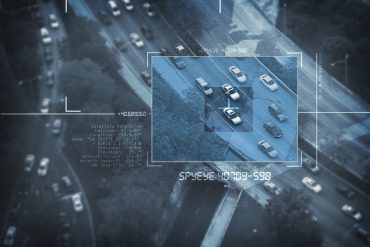
Ignoring analytics basics is a route to ruin, warns a veteran Silicon Valley CTO. For more advice on AI success, read on.
Note: There are many ways to be successful. Often the path you choose in business is so incredibly contextual—to your market, to your people, and to things as seemingly benign as your geographic location. No one article, or person, can define a path to success. That said, here are some front-line insights into known failure patterns often encountered along the way.
First and foremost, if you aren’t good at data engineering, and business analytics, you won’t be good at ML/AI. In my experience, management teams often assume they can leapfrog best practices for basic data analytics by directly adopting advanced technologies such as ML/AI.
Heed these words:
Companies that rush into artificial intelligence before mastering the fundamentals will end up paralyzed.
Automation is Key, Too
Not only do you need to be good at data engineering and business analytics, but you also need to automate. Lack of automation means people using the ‘bug-entry device’ (a.k.a. the keyboard) to process pipelines, do ETL, move data, and create downstream assets. All of these activities can and should be automated for the very real outcome that there will be mistakes made and result in the AI phrase “garbage in, garbage out” —and it will be amplified..
If you do not have technology that creates/maintains data pipelines and basic data engineering, your ability to solve problems with AI will become elusive. AI requires a highly sophisticated application of data to draw correlations and operate properly. In other words, give me a couple of years and I can make you into an overnight success in AI.
Do Not Undervalue Data
The best algorithms in the world cannot overcome bad data. Given a choice, I would much rather have more and better data than more sophisticated algorithms.
Identify the real data that can impact your business. I know this sounds obvious, but it is not always clear and there are definitely red herrings. A great example of identifying and using the right data is in horse racing. For years, horses for racing were chosen on lineage, which turns out is not very useful. The key data was left ventricle size, and spleen size.
Lesson? Get the right data and use it. This is the difference between becoming Google or going out of business as Altavista. Remember, you don’t necessarily need to know WHY that data is important right now. Have you got data that is proprietary or impossible for your competitors to gather? Comb over that and figure out how it relates.
Choose Frameworks for Thought
AI done right will fundamentally change your business; whatever you start off believing is the correct path most certainly will not be. So, in these highly dynamic situations, there are two frameworks I merge when thinking about something as transformational as AI: The Golden Triangle of People, Process and Tools, and the OODA Loop.
Over my many years of running startup engineering teams, I’ve relied on The Golden Triangle to help get me oriented in a new unknown situation.

Always start with people. Identify your key role players in the AI space. After you take stock of what you have, you’ll have a map of what you need. Augmenting with outsourced help will bridge as you grow your competence. Remember: AI/ML is important enough that you will want to have a core competency in this space.
Process is where the Golden Triangle overlaps with the OODA Loop (more in a moment). Ensure you’ve identified desired outcomes and reviewed the process and goals with the People.
Lastly, consult your team and review the available AI technology. Chances are you will be deploying on one of the big cloud platforms: Amazon (AWS), Microsoft (Azure) or Google Cloud Platform (GCP). Considerations of the specific capabilities of your people come into play here. Fit the technology to your people. Choose after the problem is clearly understood and solution requirements defined.
The OODA loop is Observe, Orient, Decide and Act. The goal of the OODA loop is to compress cycle time to maximize feedback and learning. Never has the OODA loop been more important than in the constantly shifting field of ML and AI. (We won’t detail here, but searching the term online will yield lots of useful resources on this timeless tool.)
Act Now: Do Not Wait
I believe the industry’s current Cloud and AI battles will converge, and the winner will create multi-trillion-dollar companies. Why? Consolidation of vendors and the huge cost of infrastructure and infrastructure expertise have created a market where the winner takes all – much more so than even a decade ago.
So if you were late to the party on digital commerce – imagine making that mistake again, but an order of magnitude worse.
Starting now may result in some failures. But in failure is learning, which is what AI is all about. Flashy applications of AI could mean flashy failures on a large stage, so remember that AI will permeate largely invisible tasks. You don’t need to hit a home run, you just need to figure out the game.
Remember, You Are in The Prediction Business
Avoid the natural tendency to want to understand all the details of why your AI or ML delivers conclusions and outcomes. It is not hyperbolic to say AI changes everything, every facet of the business and capturing that value as soon as possible is critical in creating the momentum to enable an AI strategy. Done is the engine of more. Your team doesn’t necessarily need to know how a Convolutional Neural Network (CNN) works in great detail. They do need to know what class of problem it has, and whether it has an appropriate application.
Take advantage of the “G-MAFIA” (Google, Microsoft, Amazon, Facebook, Intel, Apple); leverage their pure research and basic science. A lot of their work is either open sourced or documented for your consumption. Let them figure out the details. Build your in-house AI team and help them make an initial bet on which of the AI vendors makes the most sense for your business.
Avoid the Tyranny Of Small Decisions
Avoid a situation where a series of small, individually rational decisions can negatively change the context of subsequent choices, even to the point where desired alternatives are irreversibly destroyed.
The devil may be in the details. But moving a huge chunk of your business to be AI driven means being bold. Everyone will give you a reason why it won’t work. Remember that sometimes incredibly strategic decisions can be made quickly because some element is overwhelming. For example, the decision for Google to build the TPU chip for Android was said to have been based on a “back of the envelope” calculation of how much it would cost Google to store three minutes of speech for every android device that existed. The pursuit of AI is that kind of “no brainer”.
Don’t Forget: AI Is Made of and for People
Different from the people portion of the Golden Triangle, AI will change your customer base and your non-AI focused employees. Face it— there are going to be casualties in your organization as AI takes root. AI can and will replace many jobs. People will need to evolve to other professions through training. Your customer base will evolve as well. And your analytical excellence will be required to understand how shifting human capital and customers change the nature of your business.
Here’s another truth bomb: You will lose desirable people. Make sure to distribute leadership and knowledge, so that there is no single point of failure. Success in AI will define some of your employees’ careers, and that will make them targets for the G-MAFIA.
AI is often held back by a culture that doesn’t recognize the need, a lack of data, and a shortage of talent. Keeping your team in the loop on the decision-making process, and enlisting them to help solve problems will help you get buy-in.
As for organizational structure, I’ll be honest, I don’t like the “center of excellence” model which is perhaps the most popular at the moment. Too often, I find that it results in a “build it and they will come” attitude which often yields a lack of value creation. I do think whatever structure you decide works for your organization; it should be a horizontal, cross-cutting team with the potential to work across all business lines.
Do Not Ignore Regulation and the Softer Side of AI
Involve someone in the process that understands the regulatory/legal issues with your strategy. Silicon Valley upbringing tells me that as long as it is ethical, innovation trumps some regulation. Think about it— otherwise, companies like Airbnb and Uber/Lyft would never exist.
There is also a trend in moving AI & ML to be empathic and explainable. Can we trust it? What if it has a bias or makes weird decisions? Who in your organization is responsible?
The morality of AI is a huge subject that is going to become reality in direct relation to how successful you become with the technology. The canonical example is self-driving cars. There will be situations where the AI will need to make a “lesser of two evils” decision. A recent article “What if AI in health care is the next asbestos?” explores some very real ethical and moral dilemmas of AI in healthcare. No doubt healthcare can benefit greatly from machine augmented intelligence. But when does it step over a line? AI can and does craft offers that can be very attractive to humans. We can drive the behavior of consumption that may not be appropriate.
And finally, AI is not a set it and forget it pursuit. AI is a continuous journey. One best done by smartly combining innovation with proven practice.






























Matthew,
This is quite insightful.
Once again, history may repeat itself – the “centers of excellence” sounds like a retread of the ATG concept (Advanced Technology Group) which proved to be less than successful a few decades ago.
During the 80’s we implemented production AI & ML applications creating significant business value. As it turns out we used an organizational structure as you are advocating.
Unfortunately, a number of other AI / ML possibilities were dismissed once we did “due diligence’ on the underlying data and supporting business processes.
Regards,
Doug